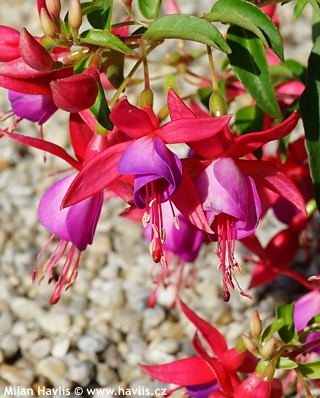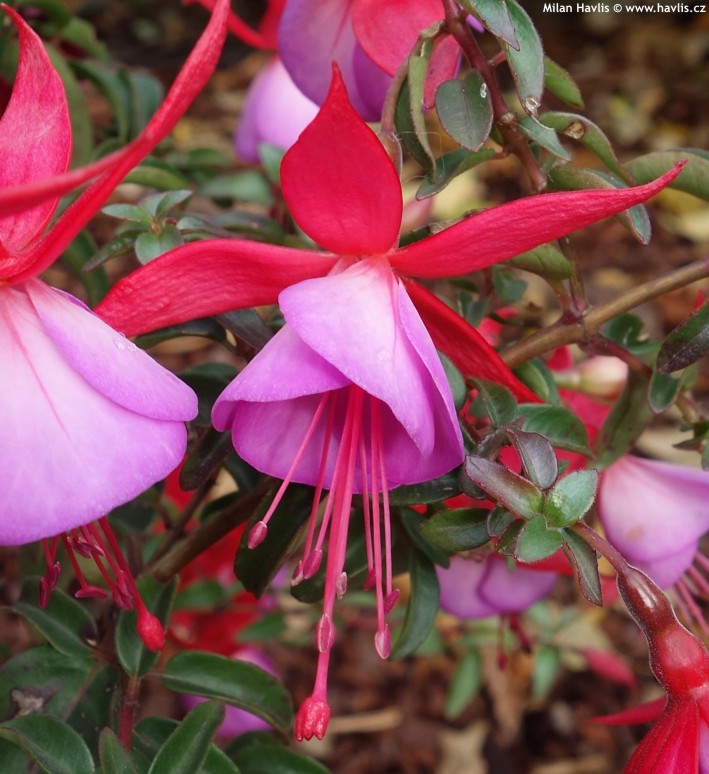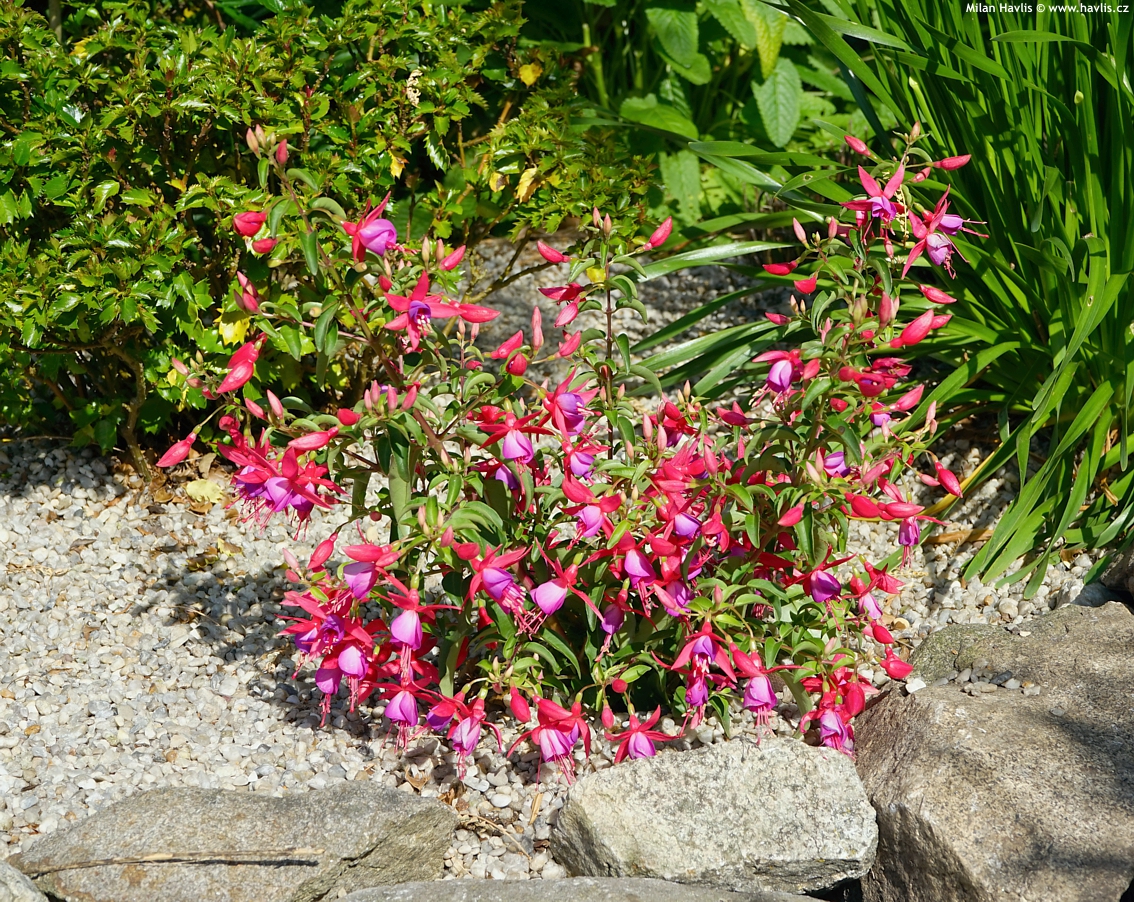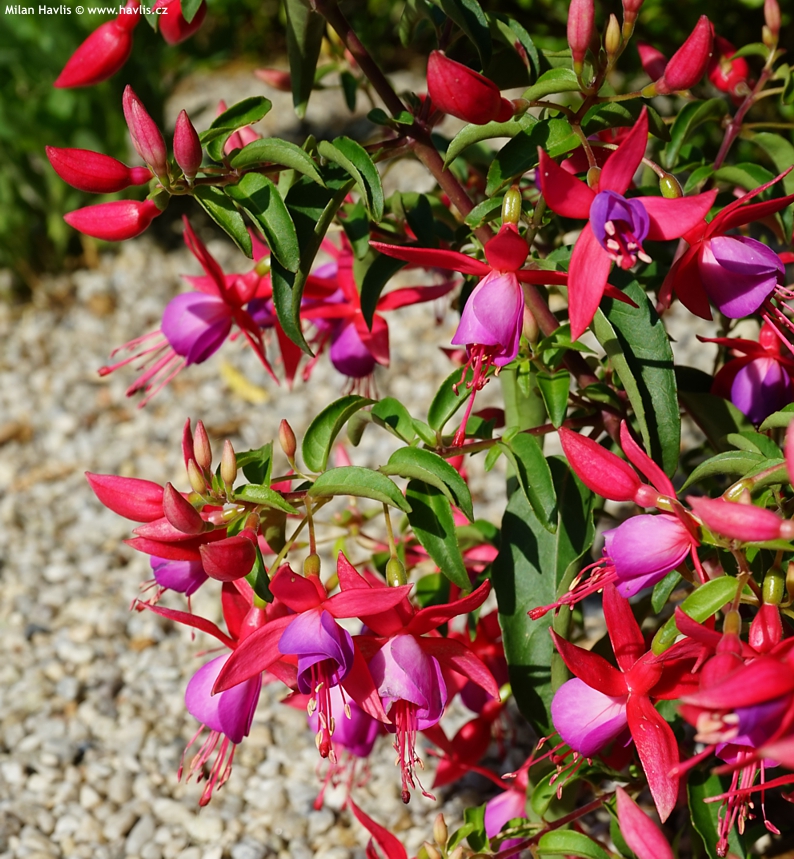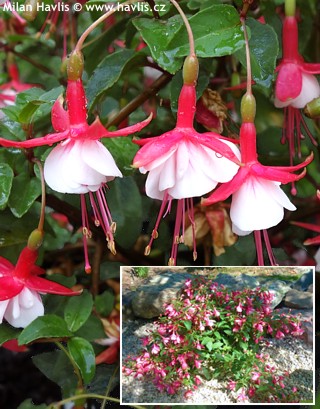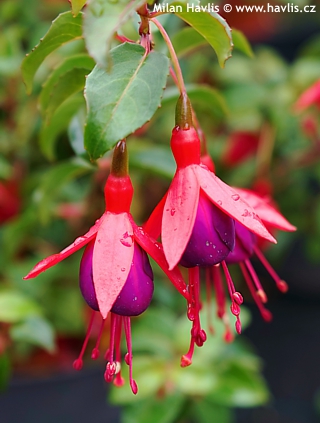Fuchsia 'SATURNUS' hardy fuchsia
Fuchsia
Fuchsias are back in fashion these days, mainly because more and more countries are testing the so-called hardy fuchsias which are aimed to live outdoors, in garden beds and borders. They are usually magellanica hybrids and we are so happy to confirm they do well in continental Europe, too.
Saturnus is a hardy fuchsia variety from the Netherlands bred by Johan De Groot as a cross between f.regia var.typica and Frau Henriëtte Ernst. It produces masses of attractive flowers which open from distinctly oval, rich fuchsia pink buds. Their sepals are elongated, conspicuous, and the corolla is partly open, light lilac pink to deeper lilac violet or lavender blue. It forms a small shrub with partly upright and partly arching twigs with flowers from late June until October. A great companion for small, spring blooming, deciduous shrubs (spiraea, viburnum or potentilla), or small evergreens and dwarf conifers.
Grow hardy fuchsias in full sun or partial shade. They need moisture from spring until they become dormant so water them freely. Mulching is recommended. However, in winter they should be kept away from wet snow and rain. Use an old plastic pot to put onto the plant upside down before the autumn rains come to keep the soil around the plant dry. Cover the plant with dry leaves or mulch and put the pot upside down onto the plant. Make sure it has holes for air circulation. Remove the pot in March and uncover the plant from mulch only after frosts. Cut back young plants, or prune older plants to live wood.
Hardy outdoor fuchsias need to be grown in full sun or minimum shade. They need moisture from spring until they become dormant so water them freely. Mulching is recommended. It is true that they hate winter wet yet they should not dry out in long and dry winters. They are not fussy about soil pH. They need well-drained, humus-rich soil. Hardiness oscillates around -21°C.
Last update 07-02-2018

































